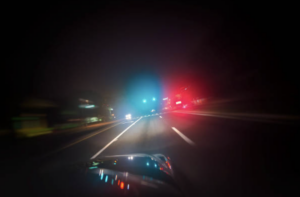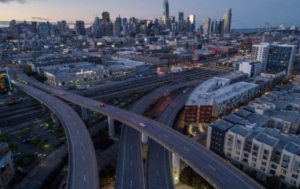Alternatives to Police Traffic Enforcement in the Bay Area

A quick look at high-profile killings of citizens by police reveals a startling trend; many occurred after a traffic stop gone wrong. Indeed, the data support this.
According to the Bureau of Justice Statistics, traffic stops are the most common form of police-citizen interaction, and these stops turn deadly at alarming rates. Mapping Police Violence data shows that in 2022 alone, 86 people were killed by police after being stopped for a traffic violation.
The stories that have dominated our headlines exemplify these statistics. In 2021, Daunte Wright, a 20-year-old father, was shot and killed by Brooklyn Center, Minnesota police during a traffic stop for expired registration tags. Several years earlier, Philando Castile was shot and killed by a St. Anthony, Minnesota police officer after reportedly being pulled over for his resemblance to a robbery suspect, in particular, his “wide-set nose.”
More recently, the death of Tyre Nichols at the hands of Memphis police after a traffic stop has reignited national conversations surrounding race and policing. As the nation grapples with his death, one question is at the forefront of the public discourse: how and why did a traffic stop escalate to murder?
This question has reenergized efforts to reconsider the role of police in traffic safety that were sparked in 2020 after the murder of George Floyd. Just recently, a new bill has been proposed in Congress aimed at encouraging and incentivizing cities that consider alternatives to police traffic enforcement. Cities and states around the country also continue to debate the role of police in the traffic arena.
Yet, in the nearly three years since many of the major proposals were made, little is known about the scale, scope, and implementation of those efforts today. Through our research, we are following how, where, and when jurisdictions have implemented alternatives to police traffic enforcement, and the various obstacles that have stood in their way.
Even when traffic stops are not deadly, they still too often end violently, causing significant harm to communities and eroding trust in police. A 2021 study by the Public Policy Institute of California found that traffic stops in the state account for 15 percent of incidents in which a civilian is seriously injured or killed by police. This same study found that Black Californians are three times more likely to be “seriously injured, shot, or killed” by police.
Although police violence after a traffic stop has had an impact on people of many races and ethnicities, a disproportionate number of incidents involve Black drivers. Dalvin Gadson, an Army veteran in Denver, was pulled over for driving below the speed limit, and was left “beaten, bloodied, and in handcuffs.” In Tennessee, Brandon Calloway was followed into his home and beaten with a baton when he drove away from an attempted traffic stop for driving through a stop sign. Arthur Higgins was pepper sprayed, punched, and kneed by San Francisco police officers after “sitting in a car parked in a bus zone.” Beyond violence, Black parents have shared stories of delivering “the talk” to their children, a conversation on how to navigate police interactions and their many hidden rules.
After many of these harrowing incidents—and the many more left out of the national headlines—communities have called for reform in traffic enforcement. To prevent further violence, degradation, and harm, several jurisdictions have lobbied for significant reforms towards a larger goal of limiting police-citizen contact. However, these reforms—and how they are to be implemented—are highly context-specific, leading to gridlock over paths forward. Nowhere is this more evident than in the Bay Area.
Within Northern California, traffic enforcement has been a major part of a larger discussion on police reform. Berkeley made national headlines for its plan to create a Department of Transportation, the first of its kind in the United States, that would be the sole enforcer of its traffic laws. In 2022, Berkeley’s city council approved a budget that would include funding for the department.

In 2021, similar moves were made in Oakland, where the city council agreed to prioritize alternative traffic enforcement recommendations when adopting the city budget. These recommendations were the product of the city’s Reimagining Public Safety Task Force report, notably including a similar call to Berkeley’s to remove traffic enforcement responsibilities from the police.
In response to community pleas, the San Francisco Police Commission is working to limit certain pretext stops, a type of traffic stop in which police legally detain drivers for a minor traffic violation when their actual intention is to conduct an investigation of a more serious crime. The proposal was approved by the Police Commission in a 4-2 vote after a lengthy battle earlier this year.
However, even after these commissions, proposals, and votes, police departments continue to have total control over traffic enforcement in each of these cities. Why? The specific impediments to implementing each of these reforms is a focus of our research. Nonetheless, one major barrier stands in the way of any kind of considerable reform: the police themselves.
Police departments and unions around the country have rallied around three sentiments to prevent traffic enforcement reform; first, traffic stops are already inherently dangerous and unpredictable, and thus, should be left only to armed professionals. However, recent findings suggest that danger for police is overblown. According to a conservative estimate, police officers are unlawfully killed during a traffic stop at a rate of 1 in 3.6 million stops. This sentiment of safety, and its validity or lack thereof, is an important piece of the puzzle.
In addition to the putative danger faced by police during traffic stops, opponents of these reforms also claim that without police enforcing traffic laws, our streets would be too unsafe for motorists and pedestrians. However, under the current approach of police-led traffic enforcement, the U.S. continues to have some of the most dangerous roads in the world. In fact, when compared to other countries in the G7, the U.S. is the only country to have seen a recent increase in yearly traffic fatalities.
Third, police and their advocates argue that limiting pretext traffic stops will inhibit police from preventing or solving other, more major crimes. One commonly cited example is that of Timothy McVeigh, the Oklahoma City bomber, who was caught after being pulled over for driving with no license plate. Yet, despite this dramatic example, several studies have shown that police very rarely arrest a driver for a more serious crime than a traffic violation.
So, where do we go from here? In our research, we aim to examine these commonly held beliefs on the importance of police in traffic safety and seek to understand recent changes in the conventional wisdom surrounding traffic enforcement, particularly within the Bay Area. By tracking what has been happening since 2020, our Center hopes to provide a comprehensive outlook on how jurisdictions have sought to reimagine the role of police in traffic enforcement and what progress they have made in over two and half years.
What makes the Bay Area unique? How is modern traffic enforcement highly unequal? If police don’t handle traffic enforcement, who will? We are exploring these questions and examining current debates on pretext stops, civilian traffic enforcement, Vision Zero, and technology innovations like automated traffic cameras, and the promises and problems they each present for reshaping how we enforce traffic laws and promote community safety.
